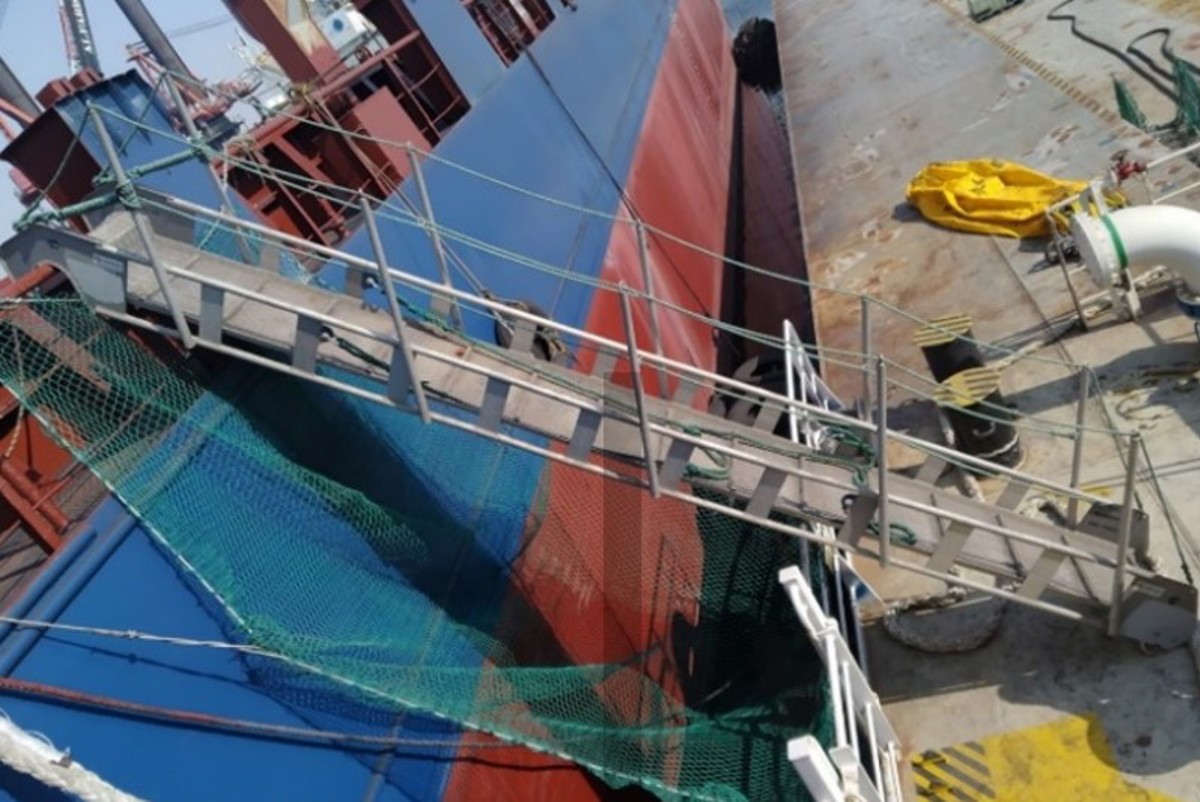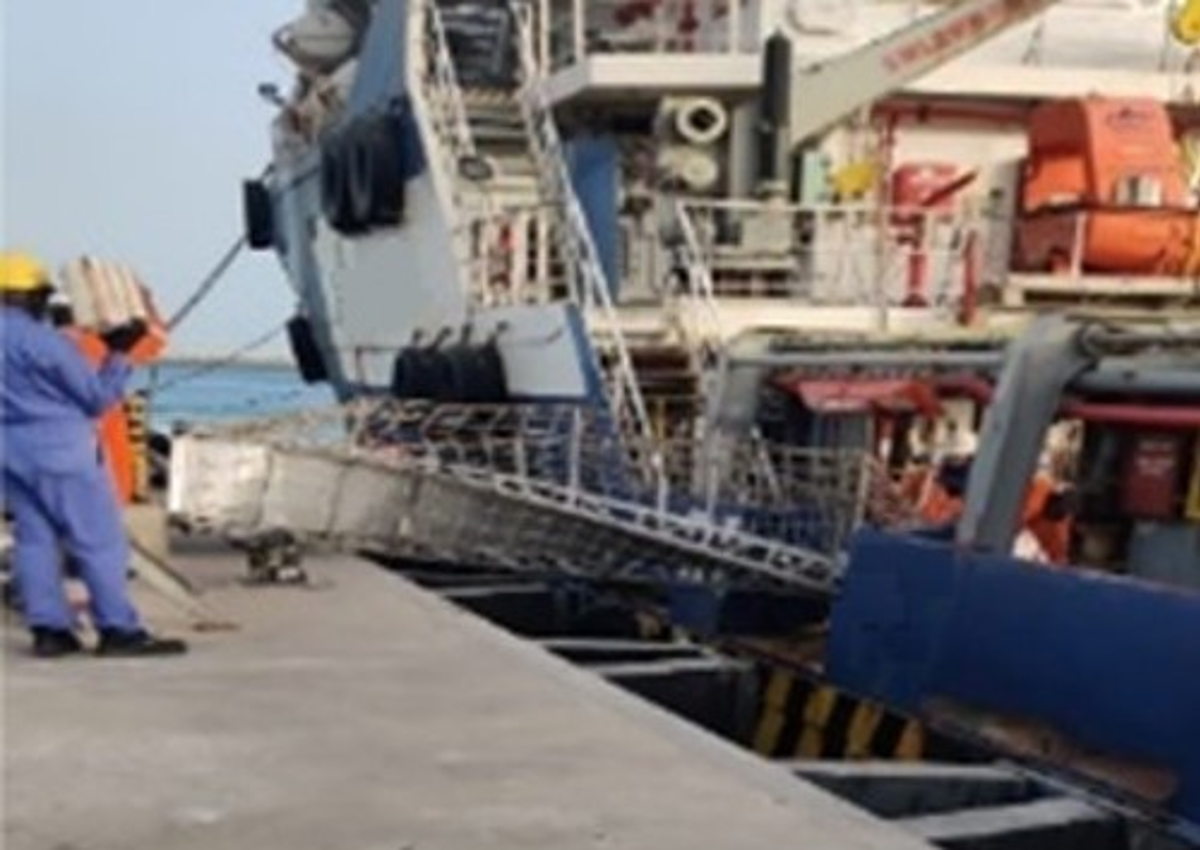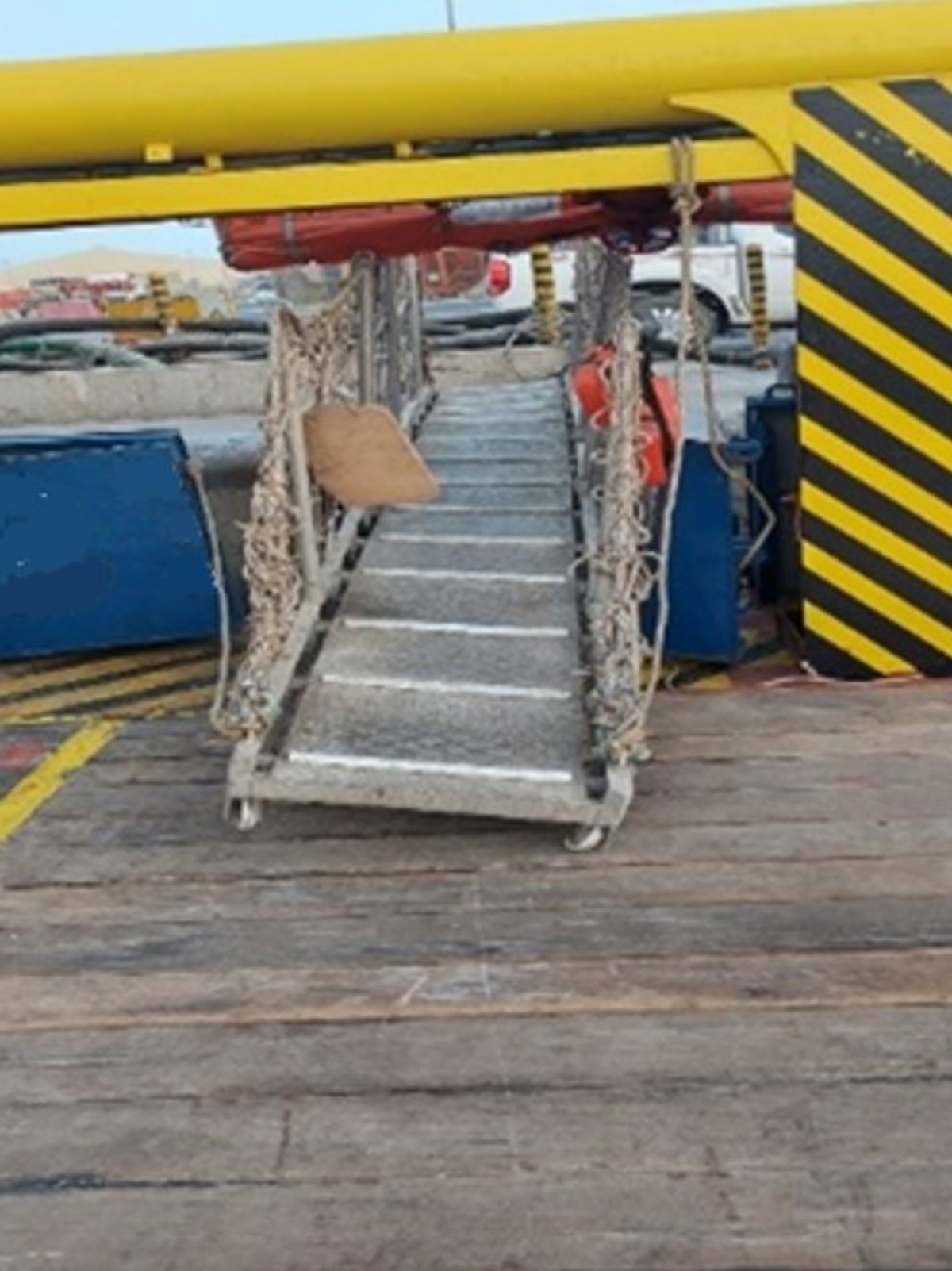Incorrect gangway rigging
- Safety Flash
- Published on 11 January 2023
- Generated on 18 December 2025
- IMCA SF 02/23
- 2 minute read
Jump to:
A Member reports several cases of gangways being rigged incorrectly.
Incident 1
What went wrong?
- The bottom of the gangway was placed on the deck less than 1 m from an unbarriered drop on the quay, which could potentially have led personnel descending the gangway to fall.
- A safety net was not mounted correctly.

Gangway in place

Red box shows unbarriered drop
What was put right?
- The gangway was relocated closer to a substructure away from the recessed deck and with adequate fencing.
- A safety net was correctly mounted to cover the gap between the ships.
Lessons learned
- Gangways should not be used at an angle of inclination greater than 30° from the horizontal.
- A safety net should be used where it is possible that a person may fall from the gangway.
- Gangways should never be secured to a ship’s guardrails unless they have been designed for that purpose. If positioned through an open section of bulwark or railings, any remaining gaps should be adequately fenced.
- As far as practicable, the means of embarkation and disembarkation should be sited clear of the working area and should not be placed where cargo or other suspended loads may pass overhead.
Incident 2
What went wrong?
A Platform Supply Vessel (PSV) was alongside loading deck cargo. The PSV suddenly started moving alongside the jetty due to propeller wash from another vessel passing nearby.
A passing workman on the quayside observed that the gangway had got stuck over a quayside bollard and was getting deformed by the vessel movement. He released the gangway rope and informed the gangway watch. The gangway was recovered to the vessel. It was found to be significantly damaged, was quarantined, then sent away for repairs.
What was the cause?
- Crew failed to assess the risks related to potential vessel movement due to weather conditions and other vessel movements nearby – in this case, propeller wash.
- The gangway watch was not thorough enough – a passing worker noticed what was happening.

Gangway deformed by movement of vessel

Gangway was significantly damaged
Lessons learned
- Ensure risk assessments related to gangway management cover risks of vessel movements due to weather conditions and impacts of waves from other vessels passing nearby.
- Ensure gangway watch and management is suitable and sufficient.
Related safety flashes
-
IMCA SF 04/22
10 February 2022
-
-
IMCA SF 07/21
4 March 2021
-
IMCA SF 14/20
28 April 2020
-
-
IMCA SF 33/16
6 December 2016
IMCA Safety Flashes summarise key safety matters and incidents, allowing lessons to be more easily learnt for the benefit of the entire offshore industry.
The effectiveness of the IMCA Safety Flash system depends on the industry sharing information and so avoiding repeat incidents. Incidents are classified according to IOGP's Life Saving Rules.
All information is anonymised or sanitised, as appropriate, and warnings for graphic content included where possible.
IMCA makes every effort to ensure both the accuracy and reliability of the information shared, but is not be liable for any guidance and/or recommendation and/or statement herein contained.
The information contained in this document does not fulfil or replace any individual's or Member's legal, regulatory or other duties or obligations in respect of their operations. Individuals and Members remain solely responsible for the safe, lawful and proper conduct of their operations.
Share your safety incidents with IMCA online. Sign-up to receive Safety Flashes straight to your email.